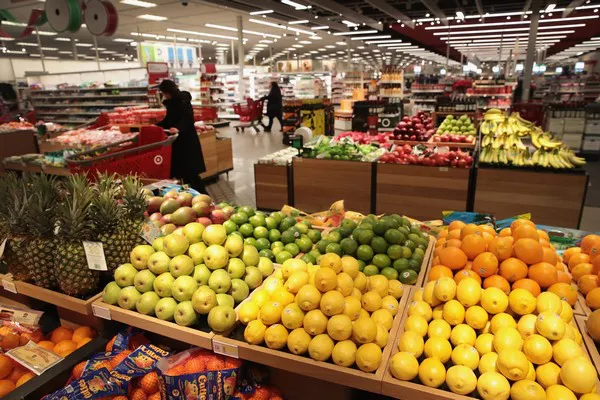Recent revelations indicate a significant downturn in the import of essential goods in Iran over the past eight months, with some sectors experiencing declines exceeding 50%. This decline, coupled with a substantial drop in red meat production in November compared to the previous year, has raised concerns among analysts about an imminent crisis in the supply of vital food items, potentially resulting in market shortages.
The Tasnim News Agency, known for its close ties to Iranian security institutions and pro-government stance, has disclosed alarming statistics from customs data, showcasing a noteworthy reduction in the import of critical commodities. Key items such as dry tea, rice, raw sugar, chicken meat, and wheat have seen reductions of 57.69%, 53.89%, 51.98%, 48.11%, and 46.20%, respectively, during the current 8-month period compared to the corresponding period last year.
Red Meat Production Takes a Hit
According to a report released by the Statistical Center of Iran, the authorized slaughterhouses in November 2023 experienced a substantial 30% reduction in red meat production compared to the same month in 2022. Additionally, the quantity of poultry meat supplied by official slaughterhouses in November 2023 witnessed a 6% decline compared to the preceding month.
The decline in essential goods imports coincides with earlier warnings about potential crises in the reserves of crucial items. In May 2023, Kaveh Zargaran, the head of the Association of Iranian Grains, declared a crisis, expressing concerns about potential shortages in 2023.
Analysts predict that the significant decline in essential goods imports will lead to market fluctuations in pricing and inventory. The forecast suggests an initial impact of rising prices, followed by potential shortages and market rationing.
Foreign Exchange Challenges and Complaints
Experts attribute the substantial import decline to challenges in securing the necessary foreign exchange for essential goods, raw materials, and critical items. Both importers and producers have voiced complaints about these challenges. Jabraeil Baradari, the head of the Agriculture Jihad Organization in Tehran province, highlighted an issue in poultry production on October 16, 2023. He pointed to prolonged clearance processes for ships carrying soybeans at the country’s ports, citing problems related to foreign exchange allocation as a significant factor.
Food Inflation Surpasses 50%
The state of essential goods supply and storage, coupled with a food inflation rate exceeding 50%, has raised concerns among officials of the Islamic Republic, including Iran’s Supreme Leader Ayatollah Ali Khamenei.
A report by Khabar Online on December 12 outlined warnings issued by clerics to Iranian President Ebrahim Raisi, with even Khamenei questioning the actual situation on the ground. The report suggests a direct inquiry by the leader into real-world developments, implying a scrutiny beyond official reports.
In recent months, government officials have presented statistics that some experts view as “statistical manipulation,” portraying the country’s economic conditions as favorable and improving. However, contrasting reports from various media outlets and social networks paint a different and challenging reality of the societal and economic situation.

